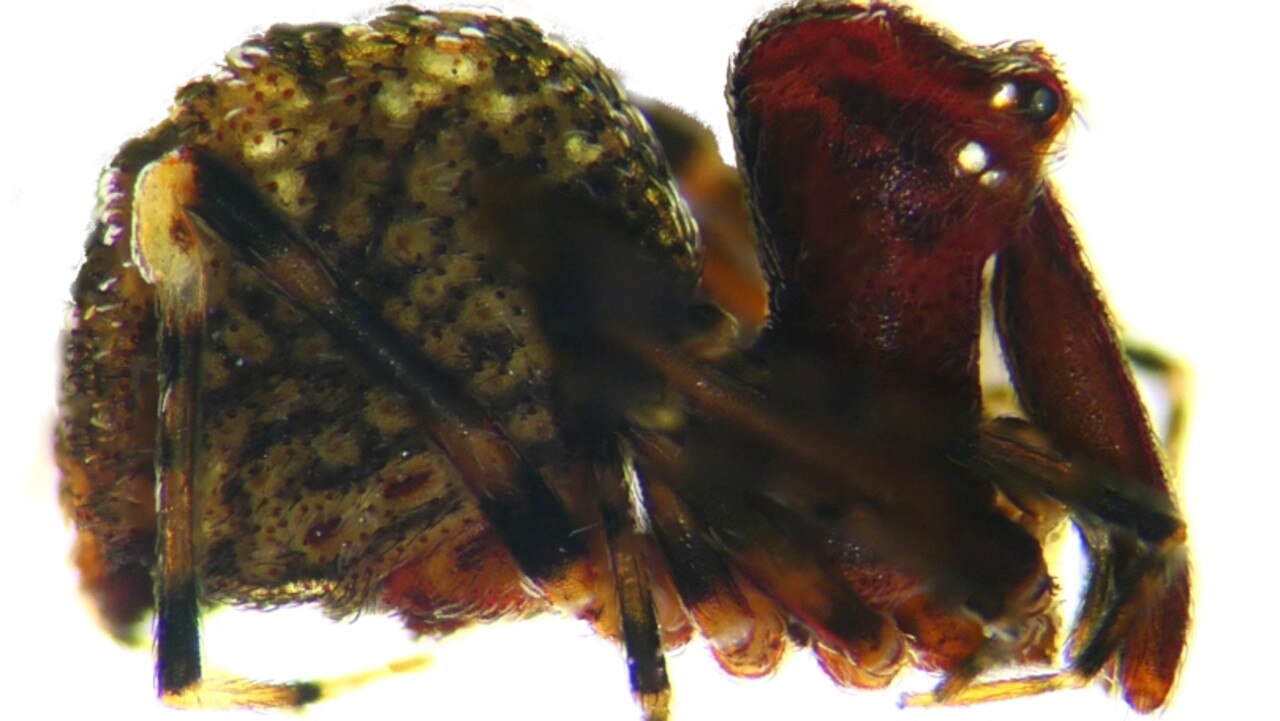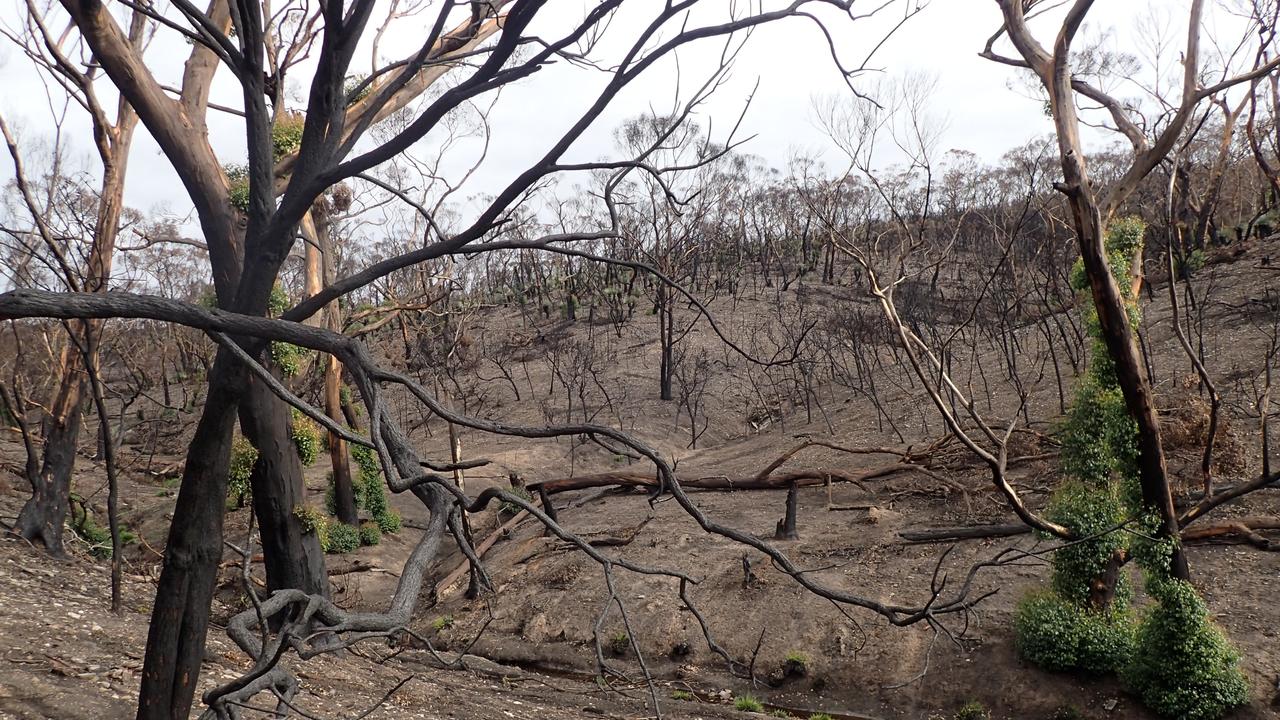Assassin spiders feared extinct after Kangaroo Island bushfire found
They’ve got elongated necks and jaws to perfectly impale their prey – other spiders – but a chance sighting of these creatures had experts very excited.
South Australian researchers have confirmed the existence of the ancient assassin spider, feared extinct after the devastating bushfires that destroyed 48 per cent of Kangaroo Island in 2019 to 2020.
Also known as archaeidae or pelican spiders due to their long neck and jaws, these rare creatures impale other spiders (thus the name assassin) with their fangs and inject them with venom.
Two spiders – a female and a juvenile – were discovered hiding under a small area of leaf litter, with scientists currently keep the area secret to protect the species. Prior to this it was thought they only lived in the Western River wilderness protection area which was ravaged by flames which destroyed all organic matter.
The two assassin spiders in question, were found 4kms away from the habitat previously known to researchers.

Dr Jessica Marsh, an honorary research associate at the South Australian Museum, was one of the researchers who made the discovery and said the find had come at just the right time.
“It was amazing! We’d been searching since the fires. (We) had just about given up hope,” she told the ABC.
“These spiders don’t disperse far, so it’s very unlikely they’ve moved there before the fires.”
Despite making the discovery in September 2020, the team waited until DNA testing confirmed the species before announce the news. Efforts will now focus on trying to find more assassin spiders, with Dr Marsh adding that she expects there are more of them.
“I think there may be other pockets out there and we’ll keep searching.”
Although other species of assassin spider do exist, this species is native to Kangaroo Island and their lineage dates back to the Jurassic period, over 140 million years ago.
While their rediscovery is exciting, Dr Marsh warned that due to the spiders’ “restricted dispersal abilities,” the survival of the species is susceptible to many threats, she told the Naracoorte Herald.
“The two spiders were found in only one batch of leaf litter; therefore, we need to undertake further surveying to find other populations on the Island and to better identify and mediate any threats, before we can be sure of its continued existence,” she said.

In other parts of Australia, wildlife staffers have reported large funnel-web spiders with 2cm-long fangs that could pierce a fingernail.
Found by keepers at the Australian Reptile Park in NSW, experts warned that wet and humid conditions in the area could lead to a surge in “megaspider” sightings.
Should people find one, Keeper Jake Meney asked residents to avoid squishing the creatures.
“She is unusually large, and if we can get the public to hand in more spiders like her, it will only result in more lives being saved due to the huge amount of venom they can produce,” he said.
It’s estimated the park’s anti-venom program saves 300 human lives a year and handles a variety of species.






